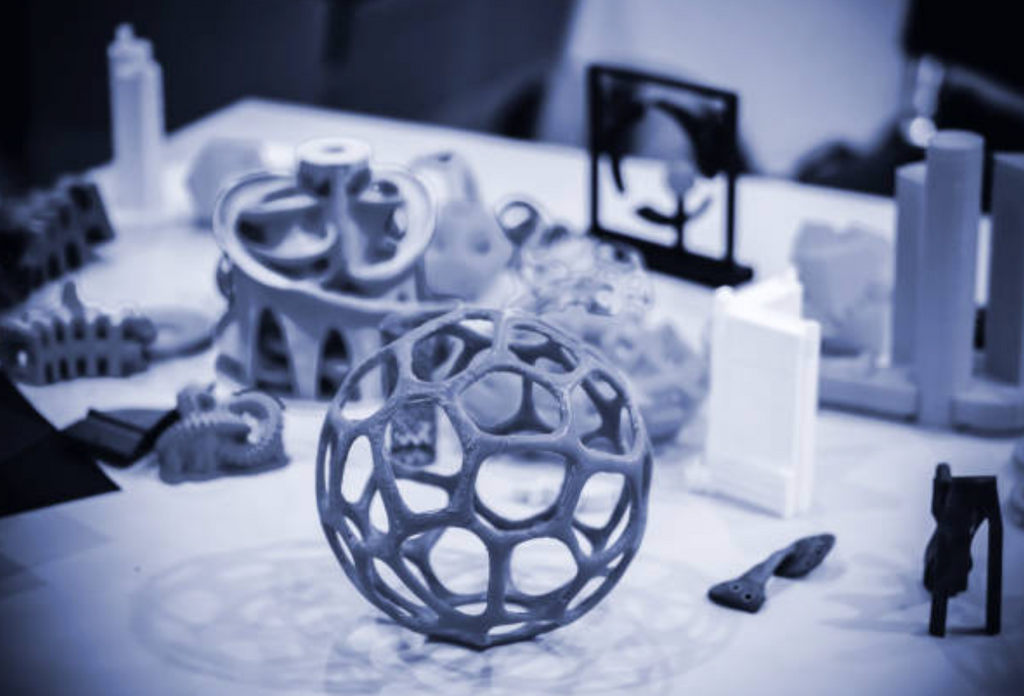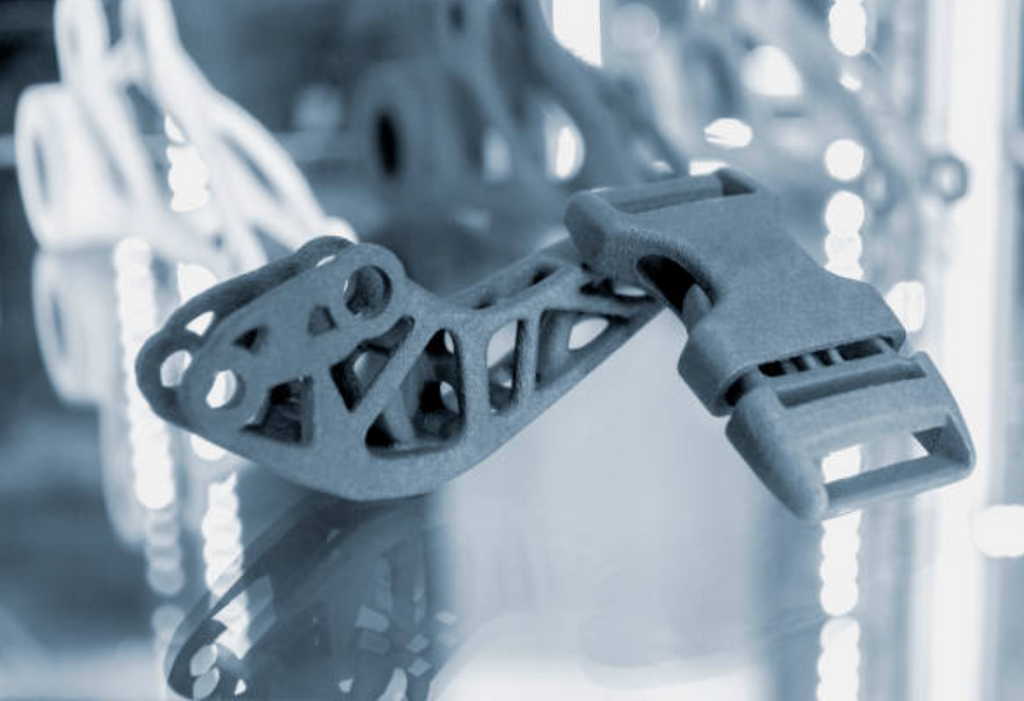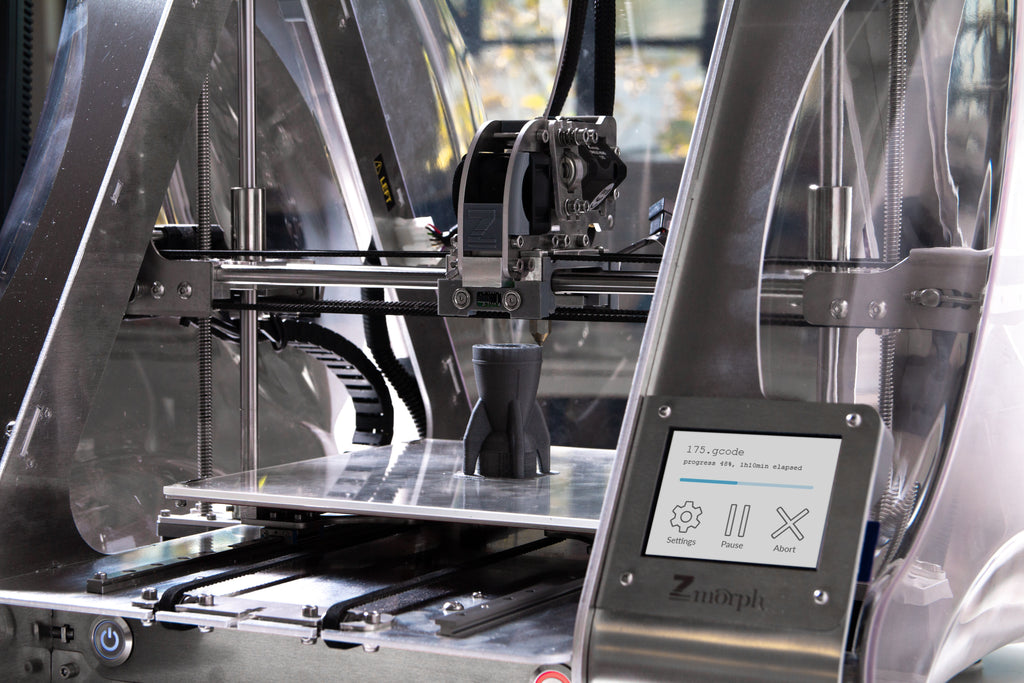As 3D printing technology continues to advance and become more accessible, there is a growing interest in the development of innovative and unique filaments. These new materials have the potential to revolutionize the way we create, enabling the production of objects with enhanced functionality, improved sustainability, and novel applications. In this article, we will investigate the latest developments in filament technology, such as the emergence of conductive, self-healing, and biodegradable materials, and discuss how these innovations could shape the future of 3D printing.
1. Conductive Filaments
1.1 Overview of Conductive Filaments
Conductive filaments represent a significant development in the field of 3D printing materials, as they allow for the creation of printed objects with integrated electrical properties. These filaments are typically composed of a base thermoplastic material, such as PLA or ABS, infused with conductive additives like carbon, graphene, or metal particles. The addition of these conductive materials enables the printed objects to transmit electrical current, opening up a wide range of potential applications and use cases.
1.2 Conductive Filament Types
There are several types of conductive filaments available on the market, each with its unique properties and applications. Some of the most common conductive filaments include:
1.2.1 Carbon-based Filaments: These filaments incorporate carbon additives, such as carbon black, carbon nanotubes, or graphene, to achieve electrical conductivity. Carbon-based filaments are lightweight and can offer excellent mechanical properties, making them suitable for a variety of applications, including sensors, antennas, and wearable electronics.
1.2.2 Metal-filled Filaments: These filaments are made by combining a base thermoplastic material with metal particles, such as copper, silver, or nickel. Metal-filled filaments can provide higher levels of electrical conductivity compared to carbon-based filaments, making them ideal for more demanding applications like circuit board prototyping and the creation of functional electronic devices.
1.2.3 Hybrid Filaments: Hybrid conductive filaments combine multiple conductive materials, such as carbon and metal particles, to create a filament with tailored electrical and mechanical properties. These filaments offer the potential for optimized performance in specific applications, enabling designers to fine-tune the material properties to meet their specific needs.
1.3 Applications and Potential Impact
Conductive filaments have the potential to revolutionize the way we create and manufacture electronic devices and components. Some of the most promising applications for conductive filaments include:
1.3.1 Custom Electronic Devices: 3D printing with conductive filaments enables the fabrication of custom electronic devices with integrated circuits and components. This capability can be particularly valuable for the development of bespoke solutions, rapid prototyping, and small-scale production runs.
1.3.2 Rapid Prototyping of Circuit Boards: The ability to print conductive pathways directly onto a substrate or within a 3D printed object can significantly accelerate the prototyping process for electronic devices, allowing designers and engineers to iterate and test their designs more rapidly and cost-effectively.
1.3.3 Smart Materials and Structures: Conductive filaments can be used to create smart materials and structures with integrated sensors, actuators, or other electronic components. These materials have the potential to enable new types of products and systems, such as adaptive building components, responsive clothing, or intelligent transportation infrastructure.
1.3.4 Electromagnetic Shielding: Conductive filaments can be used to create objects with inherent electromagnetic shielding properties, which can be useful in applications where protection from electromagnetic interference is required, such as in sensitive electronics or medical devices.
As the technology behind conductive filaments continues to advance, we can expect to see an expanding range of applications and use cases, both in the consumer market and in industrial settings. These materials have the potential to significantly impact the way we design, create, and manufacture electronic devices and components, opening up new possibilities for innovation and problem-solving.

-
Self-Healing Filaments
2.1 Overview of Self-Healing Filaments
Self-healing filaments are an exciting and innovative development in the world of 3D printing materials. These filaments are made from advanced polymers that possess the unique ability to automatically repair damage, such as cracks, scratches, or abrasions, by restoring their original molecular structure when exposed to specific stimuli like heat, light, or chemicals. This self-healing property can significantly improve the durability and longevity of 3D printed objects, reducing the need for maintenance and replacement of parts.
2.2 Types of Self-Healing Mechanisms
There are several different mechanisms through which self-healing materials can achieve their remarkable properties. Some of the most common self-healing mechanisms include:
2.2.1 Reversible Polymer Networks: In this type of self-healing material, the polymer chains are connected by reversible chemical bonds, such as hydrogen bonds or Diels-Alder reactions. When the material is damaged, the bonds can break and then reform when the stimulus is applied, allowing the polymer chains to rearrange and repair the damage.
2.2.2 Microcapsule-Based Systems: Self-healing materials with microcapsule-based systems incorporate tiny capsules filled with a healing agent, such as a monomer or catalyst. When the material is damaged, the capsules break and release their contents, which then react with the surrounding polymer matrix to repair the damage.
2.2.3 Vascular Systems: Similar to microcapsule-based systems, vascular self-healing materials contain networks of tiny channels filled with a healing agent. When damage occurs, the healing agent is released from the channels and reacts with the surrounding material to restore its original structure.
2.2.4 Shape Memory Polymers: Shape memory polymers are materials that can return to their original shape when exposed to a specific stimulus, such as heat or light. This property can be exploited for self-healing purposes by designing the material to recover its original shape, and thus repair any damage, when the stimulus is applied.
2.3 Applications and Potential Impact
Self-healing filaments have the potential to transform a wide range of industries and applications by significantly improving the durability and lifespan of 3D printed objects. Some of the most promising applications for self-healing filaments include:
2.3.1 Consumer Products: Self-healing filaments can be used to create consumer products with enhanced durability and longevity, such as protective cases for electronic devices, wearable technology, or sports equipment.
2.3.2 Industrial Components: In industries where component failure can result in costly downtime and maintenance, self-healing materials can provide significant benefits by reducing the need for repairs and replacements. Examples include machinery components, pipelines, and transportation infrastructure.
2.3.3 Aerospace and Automotive Parts: The use of self-healing materials in aerospace and automotive applications can help to improve the safety and reliability of critical components, reducing the risk of failure and extending the service life of parts.
2.3.4 Medical Devices and Implants: Self-healing materials can be used in the development of medical devices and implants that are more resistant to wear and tear, reducing the need for replacements and potentially improving patient outcomes.
As research and development in the field of self-healing materials continue to progress, we can expect to see even more innovative applications and use cases for these advanced filaments. By significantly improving the durability and longevity of 3D printed objects, self-healing filaments have the potential to revolutionize the way we design, create, and maintain products and systems across a wide range of industries
-
Biodegradable and Sustainable Filaments
3.1 Overview of Biodegradable and Sustainable Filaments
Biodegradable and sustainable filaments are a growing area of interest in the 3D printing industry, driven by the increasing awareness of environmental concerns and the need for more eco-friendly materials. These filaments are made from renewable resources or materials that can be naturally broken down into their constituent elements, reducing their environmental impact compared to traditional petroleum-based plastics like ABS and PETG.
3.2 Types of Biodegradable and Sustainable Filaments
There are several types of biodegradable and sustainable filaments available on the market, each with its unique properties and environmental benefits. Some of the most common biodegradable and sustainable filaments include:
3.2.1 PLA (Polylactic Acid): PLA is the most widely used biodegradable filament in the 3D printing industry. It is derived from renewable resources like cornstarch or sugarcane and can be broken down by microorganisms in industrial composting facilities. PLA offers good printability, making it a popular choice for both beginners and experienced users.

3.2.2 PHA (Polyhydroxyalkanoate): PHA is another biodegradable filament derived from renewable resources, such as plant oils or microbial fermentation. It exhibits higher flexibility and impact resistance compared to PLA, making it suitable for applications that require more durable printed parts.
3.2.3 PCL (Polycaprolactone): PCL is a biodegradable polyester with a low melting temperature, making it an ideal material for use in 3D printing pens or low-temperature 3D printers. It is biocompatible, making it suitable for medical applications and can be broken down by microorganisms over time.
3.2.4 Bio-based PET (Polyethylene Terephthalate): While traditional PET is derived from petroleum, bio-based PET is made from renewable resources like sugarcane or plant-based glycols. It offers the same mechanical properties and printability as traditional PET but with a reduced environmental footprint.
3.3 Applications and Potential Impact
Biodegradable and sustainable filaments have the potential to significantly reduce the environmental impact of 3D printing by replacing traditional petroleum-based materials with more eco-friendly alternatives. Some of the most promising applications for biodegradable and sustainable filaments include:
3.3.1 Consumer Products: Biodegradable filaments can be used to create a wide range of consumer products, such as toys, household items, and decorative objects, with a reduced environmental footprint compared to traditional plastics.
3.3.2 Packaging Materials: Biodegradable filaments offer an environmentally friendly alternative to conventional packaging materials, such as disposable containers, protective foam, or plastic bags.
3.3.3 Agricultural and Horticultural Applications: Biodegradable filaments can be used to create products like plant pots, seedling trays, or biodegradable support structures for plants, which can break down naturally over time, reducing waste and pollution.
3.3.4 Medical Applications: Biodegradable and biocompatible filaments can be used in the development of medical devices, implants, or scaffolds for tissue engineering, which can be designed to break down harmlessly within the body once they have fulfilled their intended purpose.
As research and development in the field of biodegradable and sustainable materials continue to progress, we can expect to see an increasing number of innovative applications and use cases for these environmentally friendly filaments. By reducing the environmental impact of 3D printing and promoting the use of renewable resources, biodegradable and sustainable filaments have the potential to contribute to a more sustainable and responsible future for manufacturing and production.
-
High-Performance and Engineering-Grade Filaments
4.1 Overview of High-Performance and Engineering-Grade Filaments
High-performance and engineering-grade filaments are designed to meet the demanding requirements of advanced applications, such as aerospace, automotive, and industrial components. These filaments offer superior mechanical properties, thermal stability, and chemical resistance compared to standard 3D printing materials, making them ideal for use in applications where performance and reliability are critical.
4.2 Types of High-Performance and Engineering-Grade Filaments
There are several types of high-performance and engineering-grade filaments available on the market, each with its unique properties and applications. Some of the most common high-performance filaments include:
4.2.1 Nylon (Polyamide): Nylon is a popular engineering-grade filament known for its excellent strength, toughness, and chemical resistance. It is available in various formulations, such as Nylon 6, Nylon 66, and Nylon 12, each with its unique properties and characteristics. Nylon filaments are suitable for a wide range of applications, including gears, bearings, and other mechanical components.
4.2.2 PC (Polycarbonate): Polycarbonate is a high-performance thermoplastic with exceptional strength, impact resistance, and thermal stability. It can withstand high temperatures and has excellent dimensional stability, making it suitable for applications such as automotive parts, protective housings, and functional prototypes.
4.2.3 PEEK (Polyether Ether Ketone): PEEK is a high-performance polymer with outstanding mechanical properties, chemical resistance, and thermal stability. It is often used in extreme environments and demanding applications, such as aerospace, automotive, and medical components. PEEK's high printing temperature and challenging printability make it more suited for advanced users and specialized printers.
4.2.4 ULTEM (Polyetherimide): ULTEM is a high-performance thermoplastic with excellent strength, dimensional stability, and chemical resistance. It is often used in aerospace, automotive, and electrical applications due to its inherent flame retardance and high-temperature resistance. Like PEEK, ULTEM requires specialized printers and advanced knowledge to print successfully.
4.3 Applications and Potential Impact
High-performance and engineering-grade filaments have the potential to revolutionize the way we design and manufacture advanced components and systems by enabling the rapid prototyping and production of parts with exceptional properties and performance. Some of the most promising applications for high-performance filaments include:
4.3.1 Aerospace and Automotive Components: High-performance filaments can be used to create lightweight, strong, and durable components for aerospace and automotive applications, such as engine parts, structural components, and interior fittings.

4.3.2 Industrial Equipment and Machinery: Engineering-grade filaments are ideal for creating components for industrial equipment and machinery that require high strength, wear resistance, and chemical stability, such as gears, bearings, and housings.
4.3.3 Medical Devices and Implants: High-performance filaments with biocompatibility and sterilization resistance can be used to develop medical devices and implants that can withstand the demanding requirements of clinical applications.
4.3.4 Electronics and Electrical Components: Engineering-grade filaments with excellent thermal and electrical properties can be used to create components for electronics and electrical systems, such as connectors, insulators, and heat sinks.
As research and development in the field of high-performance and engineering-grade materials continue to progress, we can expect to see an expanding range of applications and use cases for these advanced filaments. By enabling the rapid prototyping and production of parts with exceptional properties and performance, high-performance filaments have the potential to drive innovation and efficiency across a wide range of industries and applications.
-
Multi-Material and Composite Filaments
5.1 Overview of Multi-Material and Composite Filaments
Multi-material and composite filaments are an innovative category of 3D printing materials that combine two or more distinct materials or properties to create filaments with unique characteristics and functionality. These filaments open up a world of possibilities for designers and engineers by enabling the creation of 3D printed parts with enhanced performance, functionality, or aesthetic appeal.
5.2 Types of Multi-Material and Composite Filaments
There are several types of multi-material and composite filaments available on the market, each with its unique properties and applications. Some of the most common multi-material and composite filaments include:
5.2.1 Wood-filled Filaments: Wood-filled filaments are composite materials that combine a thermoplastic base, such as PLA, with fine wood particles or fibers. These filaments create 3D printed objects with a natural, wood-like appearance and texture, making them ideal for decorative items, furniture, and architectural models.
5.2.2 Metal-filled Filaments: Metal-filled filaments are composite materials that combine a thermoplastic base with metal powders, such as copper, bronze, or stainless steel. These filaments create 3D printed objects with the appearance and, to some extent, the properties of metal, making them suitable for applications such as jewelry, sculptures, and functional parts with enhanced thermal or electrical conductivity.
5.2.3 Carbon Fiber-reinforced Filaments: Carbon fiber-reinforced filaments are composite materials that combine a thermoplastic base, such as PLA, PETG, or nylon, with carbon fiber strands. These filaments create 3D printed objects with enhanced strength, stiffness, and dimensional stability, making them ideal for lightweight, high-performance components.

5.2.4 Multi-material Filaments: Multi-material filaments consist of two or more different materials or properties combined into a single filament. Examples include filaments that combine flexible and rigid sections or filaments that incorporate multiple colors or materials with different melting points. These filaments enable the creation of 3D printed objects with complex geometries, functional gradients, or unique aesthetic effects.5.3 Applications and Potential Impact
Multi-material and composite filaments have the potential to significantly expand the range of applications and use cases for 3D printing by enabling the creation of parts with unique properties, functionality, or aesthetic appeal. Some of the most promising applications for multi-material and composite filaments include:
5.3.1 Custom and Decorative Items: Wood-filled and metal-filled filaments can be used to create custom and decorative items with unique aesthetic appeal, such as sculptures, furniture, and architectural models.
5.3.2 Functional Prototypes and Components: Carbon fiber-reinforced and other composite filaments can be used to create functional prototypes and components with enhanced mechanical properties, making them suitable for applications in aerospace, automotive, and industrial sectors.
5.3.3 Wearables and Flexible Electronics: Multi-material filaments that combine flexible and rigid sections can be used to create wearable devices, flexible electronics, or other objects with complex geometries and functionality.
5.3.4 Artistic and Design Applications: Multi-material filaments that incorporate multiple colors or materials with different melting points can be used to create unique artistic effects, opening up new possibilities for designers and artists working with 3D printing technologies.
As research and development in the field of multi-material and composite filaments continue to progress, we can expect to see an increasing number of innovative applications and use cases for these advanced materials. By enabling the creation of parts with unique properties, functionality, or aesthetic appeal, multi-material and composite filaments have the potential to drive innovation and expand the possibilities of 3D printing across a wide range of industries and applications. We have you have learned something new from this article. Happy printing!

